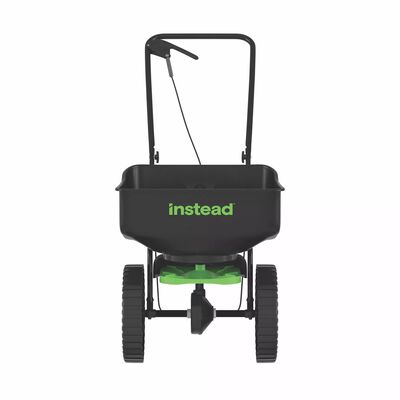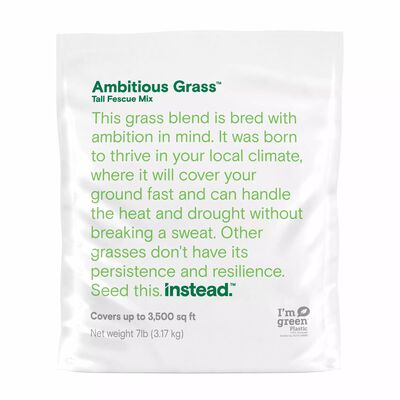
What Is Overseeding, Anyway?
Discover the easiest way to get a tired lawn back on track.
If your lawn isn't quite the lush oasis it once was, it might be time to overseed it. What is overseeding, you ask? Great question! The name is somewhat telling: Overseeding just means you're spreading grass seed across your existing lawn to help thicken it up. A little light raking is involved, but otherwise your lawn stays intact (tearing it up and starting from scratch is called reseeding).
There are a few reasons to overseed your lawn, but doing it yourself is super-straightforward. Read on to learn how!
Reasons to Overseed Your Lawn
If you're thinking this is one of those kinds of things that you don't really need to do, take a look at your lawn and ask yourself this: Is it thin and weak-looking across the board? Fertilizer probably isn't going to be able to get it back in shape on its own. Here are a few scenarios in which overseeding is common:
- You've moved into an older home and the grass looks equally tired.
- You and the fam have a lot of fun on your lawn—and it shows.
- Your area experienced a drought last year and the lawn is still suffering.
Overseeding is the best choice to get your lawn back on track. If you wait too long it it'll not only continue to look worse, it could lead to soil erosion or compaction, and then an invasion of weeds. Yikes, right?
When to Overseed Your Lawn
When to overseed depends mostly upon your grass type. Remember—grass is a plant, and it grows best when it's planted at a time conducive with the soil temperature and weather conditions it prefers.
- Cool-season grass types: Live in a cooler climate and have grass like Kentucky bluegrass, fine or tall fescue, or perennial ryegrass? Those are “cool season” grasses. Plan to overseed in spring or fall (but if you have a choice, fall is always best).
- Warm-season grass types: If you're a Southerner with a warm-season grass like Bermudagrass, St. Augustine, or zoysia, you can overseed your lawn from late spring through mid-summer. Don't even think about it once the weather serves up that brutal summer heat.

How to Overseed Your Lawn
Let's get down to how you do this thing. Overseeding is actually a very simple process, but the steps and their order are important to follow.
Choose Your Grass Seed
First, remember that you always get what you pay for, so get premium grass seed. You can thank us later. Also, you'll want to buy the right type for your existing lawn.
Mow Your Existing Lawn
Mow it shorter than you usually would but avoid "scalping" it down to nothing. Now, you know how you typically leave the grass clippings where they are because it's great for the soil and the lawn? You're not going to do that here because the grass seed will simply fall on grass clippings and it won't be able to make contact with the soil. Bag the clippings up and compost them.
Lightly Rake the Area
This will loosen up the top layer of soil and make it easier for you to remove dead grass and debris, but do it gently. Your goal is to clear the path for the grass seed to get to the soil and do its thing.
Spread the Grass Seed
Use a seed spreader and fill it with the grass seed of your choice. Adjust the setting according to the label directions on your grass seed package and apply your seed. Aim for covering the thinning grass area with a consistent layer of seed without totally obscuring the ground so you can't see it.
Water for Two Weeks
Water your overseeded lawn 1 to 2 times per day for about 2 weeks, or until the grass seed sprouts and grows to the height of your existing grass. You'll want to keep foot and paw traffic to a minimum until that point, so we recommend dangling treats and hanging out in another area of your yard to avoid temptation. Hey, whatever works, right?
To keep your newly overseeded lawn looking nice and thick, plan for regular maintenance—watering, mowing, and fertilizing—throughout the year. But hey, life happens. And when it does, you'll have the knowledge and skill to know how to fill that grass back in again.

